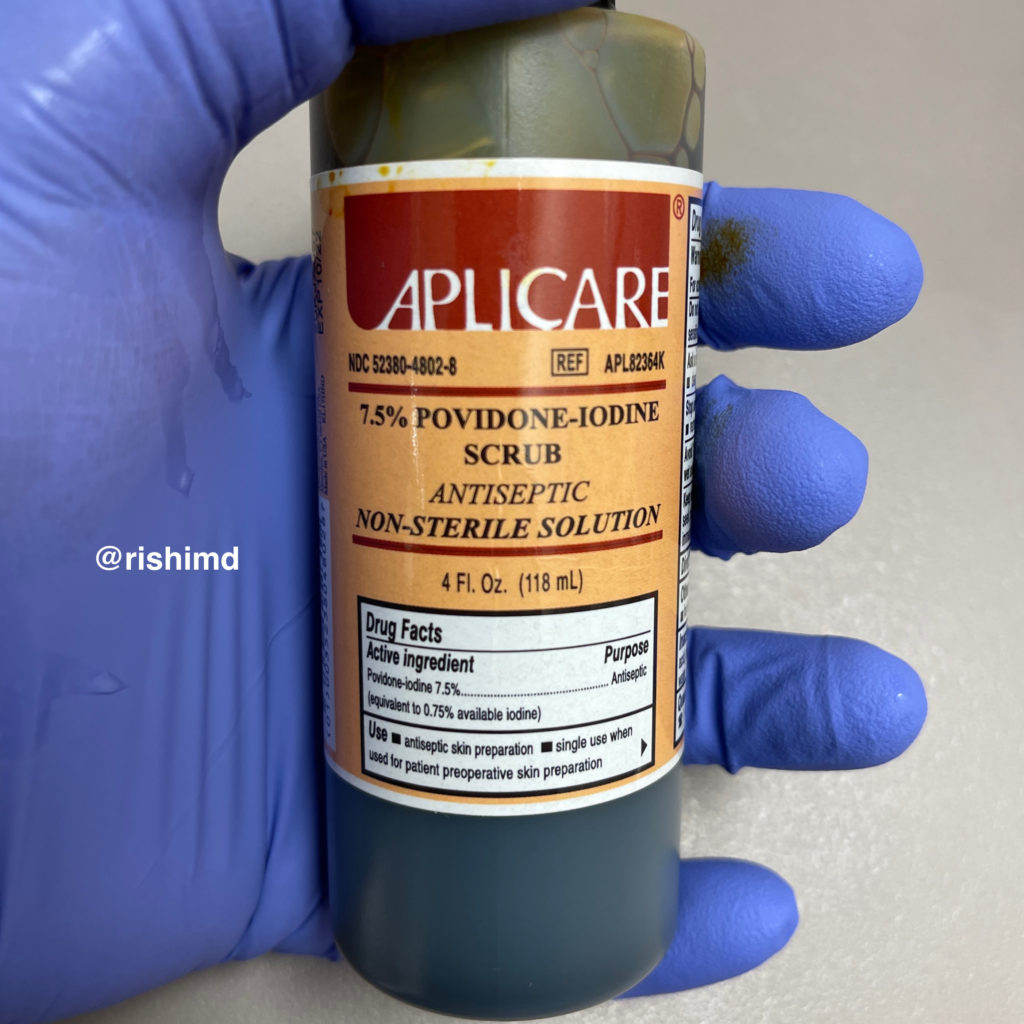Povidone-iodine (Betadine) is a topical antiseptic I use for patients with allergies/sensitivities to chlorhexidine before invasive procedures (chest tubes, lumbar drains, central lines, etc.) in the ICU and OR settings. During emergent cardiac surgeries, sometimes all we have time for is a “Betadine splash” before performing life-saving interventions.
Betadine’s bactericidal effects are due to a release of iodine which creates an oxidative disruption of bacterial protein synthesis, cell membranes, DNA integrity, etc. It is effective against many skin pathogens (gram-positive and negative bacteria, viruses, yeasts, etc.) For clean and clean-contaminated operations, chlorhexidine (see prior post) is a better antiseptic option. Specifically, with burn care, concerns surrounding delayed healing, cytotoxicity, and multiple applications each day make Betadine a controversial choice.
Another interesting point – cleaning solutions like chlorhexidine and adhesive compounds like benzoin and Mastisol have varying amounts of alcohol, making them FLAMMABLE! On the other hand, Betadine is a water-based antiseptic devoid of alcohol and nonflammable.
Drop me a comment below with questions!







If it is possible, please explain when the bactericidal effect of this solution starts and ends after application of it on a surface. In addition , how many hours or minutes does it protect or continue it’s effects…Because health professionals (!) always perform invasive procedures just after application of it.
I’m really not sure. In emergencies, I’ve seen “Betadide splashes” used often (basically splash Betadine and begin the procedure seconds later) which suggests that the topical bactericidal effects should be within seconds, but I don’t have data supporting the onset/duration.